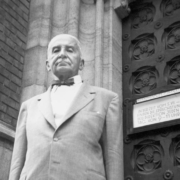A challenge for 2012 – part one was to read
The Theory of Money and Credit by Mises on its 100th year anniversary. The 1934 preface was sadly so pertinent to today that we reproduced it as an enticement to read the whole book.
My second challenge for 2012 is to read a book written 86 years later by Jesús Huerta de Soto in its English translation called
Money, Bank Credit, and Economic Cycles, which can be downloaded
here.
Like
The Theory of Money and Credit in its day, this book is the most comprehensive economic text on money, capital theory, business cycles and entrepreneurship written by a modern Austrian.
Here is the preface to the second English edition, written by Huerta de Soto in November 2008.
I am happy to present the second English edition of
Money, Bank Credit, and Economic Cycles. Its appearance is particularly timely, given that the severe financial crisis and resulting worldwide economic recession I have been forecasting, since the first edition of this book came out ten years ago, are now unleashing their fury.
The policy of artificial credit expansion central banks have permitted and orchestrated over the last fifteen years could not have ended in any other way. The expansionary cycle which has now come to a close began gathering momentum when the American economy emerged from its last recession (fleeting and repressed though it was) in 2001 and the Federal Reserve reembarked on the major artificial expansion of credit and investment initiated in 1992. This credit expansion was not backed by a parallel increase in voluntary household saving. For many years, the money supply in the form of bank notes and deposits has grown at an average rate of over 10 percent per year (which means that every seven years the total volume of money circulating in the world has doubled). The media of exchange originating from this severe fiduciary inflation have been placed on the market by the banking system as newlycreated loans granted at very low (and even negative in real terms) interest rates. The above fueled a speculative bubble in the shape of a substantial rise in the prices of capital goods, real-estate assets and the securities which represent them, and are exchanged on the stock market, where indexes soared.
Curiously, like in the “roaring” years prior to the Great Depression of 1929, the shock of monetary growth has not significantly influenced the prices of the subset of consumer goods and services (approximately only one third of all goods). The last decade, like the 1920s, has seen a remarkable increase in productivity as a result of the introduction on a massive scale of new technologies and significant entrepreneurial innovations which, were it not for the injection of money and credit, would have given rise to a healthy and sustained reduction in the unit price of consumer goods and services. Moreover, the full incorporation of the economies of China and India into the globalized market has boosted the real productivity of consumer goods and services even further. The absence of a healthy “deflation” in the prices of consumer goods in a stage of such considerable growth in productivity as that of recent years provides the main evidence that the monetary shock has seriously disturbed the economic process. I analyze this phenomenon in detail in chapter 6, section 9.
As I explain in the book, artificial credit expansion and the (fiduciary) inflation of media of exchange offer no short cut to stable and sustained economic development, no way of avoiding the necessary sacrifice and discipline behind all high rates of voluntary saving. (In fact, particularly in the United States, voluntary saving has not only failed to increase in recent years, but at times has even fallen to a negative rate.) Indeed, the artificial expansion of credit and money is never more than a short-term solution, and that at best. In fact, today there is no doubt about the recessionary quality the monetary shock always has in the long run: newly-created loans (of money citizens have not first saved) immediately provide entrepreneurs with purchasing power they use in overly ambitious investment projects (in recent years, especially in the building sector and real estate development). In other words, entrepreneurs act as if citizens had increased their saving, when they have not actually done so. Widespread discoordination in the economic system results: the financial bubble (“irrational exuberance”) exerts a harmful effect on the real economy, and sooner or later the process reverses in the form of an economic recession, which marks the beginning of the painful and necessary readjustment. This readjustment invariably requires the reconversion of every real productive structure inflation has distorted. The specific triggers of the end of the euphoric monetary “binge” and the beginning of the recessionary “hangover” are many, and they can vary from one cycle to another. In the current circumstances, the most obvious triggers have been the rise in the price of raw materials, particularly oil, the subprime mortgage crisis in the United States, and finally, the failure of important banking institutions when it became clear in the market that the value of their liabilities exceeded that of their assets (mortgage loans granted).
At present, numerous self-interested voices are demanding further reductions in interest rates and new injections of money which permit those who desire it to complete their investment projects without suffering losses. Nevertheless, this escape forward would only temporarily postpone problems at the cost of making them far more serious later. The crisis has hit because the profits of capital-goods companies (especially in the building sector and in real-estate development) have disappeared due to the entrepreneurial errors provoked by cheap credit, and because the prices of consumer goods have begun to perform relatively less poorly than those of capital goods. At this point, a painful, inevitable readjustment begins, and in addition to a decrease in production and an increase in unemployment, we are now still seeing a harmful rise in the prices of consumer goods (stagflation).
The most rigorous economic analysis and the coolest, most balanced interpretation of recent economic and financial events support the conclusion that central banks (which are true financial central-planning agencies) cannot possibly succeed in finding the most advantageous monetary policy at every moment. This is exactly what became clear in the case of the failed attempts to plan the former Soviet economy from above. To put it another way, the theorem of the economic impossibility of socialism, which the Austrian economists Ludwig von Mises and Friedrich A. Hayek discovered, is fully applicable to central banks in general, and to the Federal Reserve—(at one time) Alan Greenspan and (currently) Ben Bernanke—in particular. According to this theorem, it is impossible to organize society, in terms of economics, based on coercive commands issued by a planning agency, since such a body can never obtain the information it needs to infuse its commands with a coordinating nature. Indeed, nothing is more dangerous than to indulge in the “fatal conceit”—to use Hayek’s useful expression—of believing oneself omniscient or at least wise and powerful enough to be able to keep the most suitable monetary policy fine tuned at all times. Hence, rather than soften the most violent ups and downs of the economic cycle, the Federal Reserve and, to some lesser extent, the European Central Bank, have most likely been their main architects and the culprits in their worsening. Therefore, the dilemma facing Ben Bernanke and his Federal Reserve Board, as well as the other central banks (beginning with the European Central Bank), is not at all comfortable. For years they have shirked their monetary responsibility, and now they find themselves in a blind alley. They can either allow the recessionary process to begin now, and with it the healthy and painful readjustment, or they can escape forward toward a “hair of the dog” cure. With the latter, the chances of even more severe stagflation in the not-too-distant future increase exponentially. (This was precisely the error committed following the stock market crash of 1987, an error which led to the inflation at the end of the 1980s and concluded with the sharp recession of 1990–1992.) Furthermore, the reintroduction of a cheap-credit policy at this stage could only hinder the necessary liquidation of unprofitable investments and company reconversion. It could even wind up prolonging the recession indefinitely, as has occurred in Japan in recent years: though all possible interventions have been tried, the Japanese economy has ceased to respond to any monietarist stimulus involving credit expansion or Keynesian methods. It is in this context of “financial schizophrenia” that we must interpret the latest “shots in the dark” fired by the monetary authorities (who have two totally contradictory responsibilities: both to control inflation and to inject all the liquidity necessary into the financial system to prevent its collapse). Thus, one day the Federal Reserve rescues Bear Stearns, AIG, Fannie Mae, and Freddie Mac or Citigroup, and the next it allows Lehman Brothers to fail, under the amply justified pretext of “teaching a lesson” and refusing to fuel moral hazard. Then, in light of the way events were unfolding, a 700-billion-dollar plan to purchase the euphemistically named “toxic” or “illiquid” (i.e., worthless) assets from the banking system was approved. If the plan is financed by taxes (and not more inflation), it will mean a heavy tax burden on households, precisely when they are least able to bear it. Finally, in view of doubts about whether such a plan could have any effect, the choice was made to inject public money directly into banks, and even to “guarantee” the total amount of their deposits, decreasing interest rates to almost zero percent.
In comparison, the economies of the European Union are in a somewhat less poor state (if we do not consider the expansionary effect of the policy of deliberately depreciating the dollar, and the relatively greater European rigidities, particularly in the labor market, which tend to make recessions in Europe longer and more painful). The expansionary policy of the European Central Bank, though not free of grave errors, has been somewhat less irresponsible than that of the Federal Reserve. Furthermore, fulfillment of the convergence criteria involved at the time a healthy and significant rehabilitation of the chief European economies. Only the countries on the periphery, like Ireland and particularly Spain, were immersed in considerable credit expansion from the time they initiated their processes of convergence. The case of Spain is paradigmatic. The Spanish economy underwent an economic boom which, in part, was due to real causes (liberalizing structural reforms which originated with José María Aznar’s administration in 1996). Nevertheless, the boom was also largely fueled by an artificial expansion of money and credit, which grew at a rate nearly three times that of the corresponding rates in France and Germany. Spanish economic agents essentially interpreted the decrease in interest rates which resulted from the convergence process in the easy-money terms traditional in Spain: a greater availability of easy money and mass requests for loans from Spanish banks (mainly to finance realestate speculation), loans which these banks have granted by creating the money
ex nihilo while European central bankers looked on unperturbed. When faced with the rise in prices, the European Central Bank has remained faithful to its mandate and has tried to maintain interest rates as long as possible, despite the difficulties of those members of the Monetary Union which, like Spain, are now discovering that much of their investment in real estate was in error and are heading for a lengthy and painful reorganization of their real economy.
Under these circumstances, the most appropriate policy would be to liberalize the economy at all levels (especially in the labor market) to permit the rapid reallocation of productive factors (particularly labor) to profitable sectors. Likewise, it is essential to reduce public spending and taxes, in order to increase the available income of heavily-indebted economic agents who need to repay their loans as soon as possible. Economic agents in general and companies in particular can only rehabilitate their finances by cutting costs (especially labor costs) and paying off loans. Essential to this aim are a very flexible labor market and a much more austere public sector. These factors are fundamental if the market is to reveal as quickly as possible the real value of the investment goods produced in error and thus lay the foundation for a healthy, sustained economic recovery in a future which, for the good of all, I hope is not long in coming.
We must not forget that a central feature of the recent period of artificial expansion was a gradual corruption, on the American continent as well as in Europe, of the traditional principles of accounting as practiced globally for centuries. To be specific, acceptance of the International Accounting Standards (IAS) and their incorporation into law in different countries (in Spain via the new General Accounting Plan, in effect as of January 1, 2008) have meant the abandonment of the traditional principle of prudence and its replacement by the principle of fair value in the assessment of the value of balance sheet assets, particularly financial assets. In this abandonment of the traditional principle of prudence, a highly influential role has been played by brokerages, investment banks (which are now on their way to extinction), and in general, all parties interested in “inflating” book values in order to bring them closer to supposedly more “objective” stockmarket values, which in the past rose continually in an economic process of financial euphoria. In fact, during the years of the “speculative bubble,” this process was characterized by a feedback loop: rising stock-market values were immediately entered into the books, and then such accounting entries were sought as justification for further artificial increases in the prices of financial assets listed on the stock market.
In this wild race to abandon traditional accounting principles and replace them with others more “in line with the times,” it became common to evaluate companies based on unorthodox suppositions and purely subjective criteria which in the new standards replace the only truly objective criterion (that of historical cost). Now, the collapse of financial markets and economic agents’ widespread loss of faith in banks and their accounting practices have revealed the serious error involved in yielding to the IAS and their abandonment of traditional accounting principles based on prudence, the error of indulging in the vices of creative, fair-value accounting.
It is in this context that we must view the recent measures taken in the United States and the European Union to “soften” (i.e., to partially reverse) the impact of fair-value accounting for financial institutions. This is a step in the right direction, but it falls short and is taken for the wrong reasons. Indeed, those in charge at financial institutions are attempting to “shut the barn door when the horse is bolting”; that is, when the dramatic fall in the value of “toxic” or “illiquid” assets has endangered the solvency of their institutions. However, these people were delighted with the new IAS during the preceding years of “irrational exuberance,” in which increasing and excessive values in the stock and financial markets graced their balance sheets with staggering figures corresponding to their own profits and net worth, figures which in turn encouraged them to run risks (or better, uncertainties) with practically no thought of danger. Hence, we see that the IAS act in a pro-cyclic manner by heightening volatility and erroneously biasing business management: in times of prosperity, they create a false “wealth effect” which prompts people to take disproportionate risks; when, from one day to the next, the errors committed come to light, the loss in the value of assets immediately decapitalizes companies, which are obliged to sell assets and attempt to recapitalize at the worst moment, i.e., when assets are worth the least and financial markets dry up. Clearly, accounting principles which, like those of the IAS, have proven so disturbing must be abandoned as soon as possible, and all of the accounting reforms recently enacted, specifically the Spanish one, which came into effect January 1, 2008, must be reversed. This is so not only because these reforms mean a dead end in a period of financial crisis and recession, but especially because it is vital that in periods of prosperity we stick to the principle of prudence in valuation, a principle which has shaped all accounting systems from the time of Luca Pacioli at the beginning of the fifteenth century to the adoption of the false idol of the IAS.
In short, the greatest error of the accounting reform recently introduced worldwide is that it scraps centuries of accounting experience and business management when it replaces the prudence principle, as the highest ranking among all traditional accounting principles, with the “fair value” principle, which is simply the introduction of the volatile market value for an entire set of assets, particularly financial assets. This Copernican turn is extremely harmful and threatens the very foundations of the market economy for several reasons. First, to violate the traditional principle of prudence and require that accounting entries reflect market values is to provoke, depending upon the conditions of the economic cycle, an inflation of book values with surpluses which have not materialized and which, in many cases, may never materialize. The artificial “wealth effect” this can produce, especially during the boom phase of each economic cycle, leads to the allocation of paper (or merely temporary) profits, the acceptance of disproportionate risks, and in short, the commission of systematic entrepreneurial errors and the consumption of the nation’s capital, to the detriment of its healthy productive structure and its capacity for long-term growth. Second, I must emphasize that the purpose of accounting is not to reflect supposed “real” values (which in any case are subjective and which are determined and vary daily in the corresponding markets) under the pretext of attaining a (poorly understood) “accounting transparency.” Instead, the purpose of accounting is to permit the prudent management of each company and to prevent capital consumption, by applying strict standards of accounting conservatism (based on the prudence principle and the recording of either historical cost or market value, whichever is less), standards which ensure at all times that distributable profits come from a safe surplus which can be distributed without in any way endangering the future viability and capitalization of the company. Third, we must bear in mind that in the market there are no equilibrium prices a third party can objectively determine. Quite the opposite is true; market values arise from subjective assessments and fluctuate sharply, and hence their use in accounting eliminates much of the clarity, certainty, and information balance sheets contained in the past. Today, balance sheets have become largely unintelligible and useless to economic agents. Furthermore, the volatility inherent in market values, particularly over the economic cycle, robs accounting based on the “new principles” of much of its potential as a guide for action for company managers and leads them to systematically commit major errors in management, errors which have been on the verge of provoking the severest financial crisis to ravage the world since 1929.
In chapter 9 of this book (pages 789–803), I design a process of transition toward the only world financial order which, being fully compatible with the free-enterprise system, can eliminate the financial crises and economic recessions which cyclically affect the world’s economies. The proposal the book contains for international financial reform has acquired extreme relevance at the present time (November 2008), in which the disconcerted governments of Europe and America have organized a world conference to reform the international monetary system in order to avoid in the future such severe financial and banking crises as the one that currently grips the entire western world. As is explained in detail over the nine chapters of this book, any future reform will fail as miserably as past reforms unless it strikes at the very root of the present problems and rests on the following principles: (1) the reestablishment of a 100-percent reserve requirement on all bank demand deposits and equivalents; (2) the elimination of central banks as lenders of last resort (which will be unnecessary if the preceding principle is applied, and harmful if they continue to act as financial central-planning agencies); and (3) the privatization of the current, monopolistic, and fiduciary state-issued money and its replacement with a classic pure gold standard. This radical, definitive reform would essentially mark the culmination of the 1989 fall of the Berlin Wall and real socialism, since the reform would mean the application of the same principles of liberalization and private property to the only sphere, that of finance and banking, which has until now remained mired in central planning (by “central” banks), extreme interventionism (the fixing of interest rates, the tangled web of government regulations), and state monopoly (legal tender laws which require the acceptance of the current, state-issued fiduciary money), circumstances with very negative and dramatic consequences, as we have seen.
I should point out that the transition process designed in the last chapter of this book could also permit from the outset the bailing out of the current banking system, thus preventing its rapid collapse, and with it the sudden monetary squeeze which would be inevitable if, in an environment of widespread broken trust among depositors, a significant volume of bank deposits were to disappear. This short-term goal, which at present, western governments are desperately striving for with the most varied plans (the massive purchases of “toxic” bank assets, the
ad hominem guarantee of all deposits, or simply the partial or total nationalization of the private banking system), could be reached much faster and more effectively, and in a manner much less harmful to the market economy, if the first step in the proposed reform (pages 791–98) were immediately taken: to back the total amount of current bank deposits (demand deposits and equivalents) with cash, bills to be turned over to banks, which from then on would maintain a 100-percent reserve with respect to deposits. As illustrated in chart IX-2 of chapter 9, which shows the consolidated balance sheet for the banking system following this step, the issuance of these banknotes would in no way be inflationary (since the new money would be “sterilized,” so to speak, by its purpose as backing to satisfy any sudden deposit withdrawals). Furthermore, this step would free up all banking assets (“toxic” or not) which currently appear as backing for demand deposits (and equivalents) on the balance sheets of private banks. On the assumption that the transition to the new financial system would take place under “normal” circumstances, and not in the midst of a financial crisis as acute as the current one, I proposed in chapter 9 that the “freed” assets be transferred to a set of mutual funds created
ad hoc and managed by the banking system, and that the shares in these funds be exchanged for outstanding treasury bonds and for the implicit liabilities connected with the public social-security system (pp. 796–97). Nevertheless, in the current climate of severe financial and economic crisis, we have another alternative: apart from canceling “toxic” assets with these funds, we could devote a portion of the rest, if desired, to enabling savers (not depositors, since their deposits would already be backed 100 percent) to recover a large part of the value lost in their investments (particularly in loans to commercial banks, investment banks, and holding companies). These measures would immediately restore confidence and would leave a significant remainder to be exchanged, once and for all and at no cost, for a sizeable portion of the national debt, our initial aim. In any case, an important warning must be given: naturally, and I must never tire of repeating it, the solution proposed is only valid in the context of an irrevocable decision to reestablish a free-banking system subject to a 100-percent reserve requirement on demand deposits. Any of the reforms noted above, if adopted in the absence of a prior, firm conviction and decision to change the international financial and banking system as indicated, would be simply disastrous: a private banking system which continued to operate with a fractional reserve (orchestrated by the corresponding central banks), would generate, in a cascading effect, and based on the cash created to back deposits, an inflationary expansion like none other in history, one which would eventually finish off our entire economic system.
The above considerations are crucially important and reveal how very relevant this treatise has now become in light of the critical state of the international financial system (though I would definitely have preferred to write the preface to this new edition under very different economic circumstances). Nevertheless, while it is tragic that we have arrived at the current situation, it is even more tragic, if possible, that there exists a widespread lack of understanding regarding the causes of the phenomena that plague us, and especially an atmosphere of confusion and uncertainty prevalent among experts, analysts, and most economic theorists. In this area at least, I can hope the successive editions of this book which are being published all over the world may contribute to the theoretical training of readers, to the intellectual rearmament of new generations, and eventually, to the sorely needed institutional redesign of the entire monetary and financial system of current market economies. If this hope is fulfilled, I will not only view the effort made as worthwhile, but will also deem it a great honor to have contributed, even in a very small way, to movement in the right direction.
Jesús Huerta de Soto Madrid November 13, 2008











